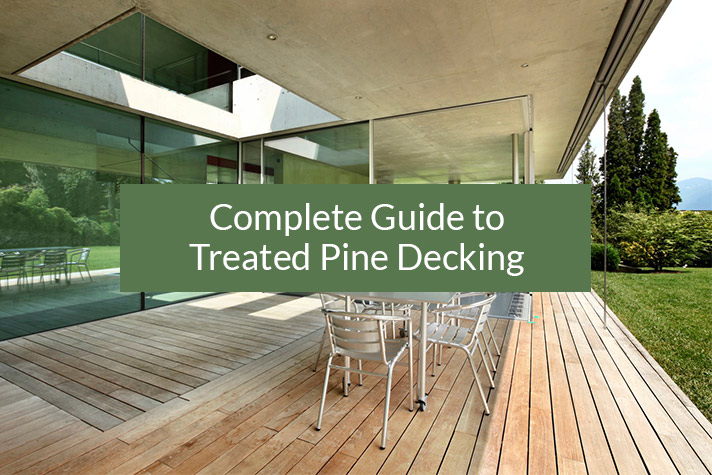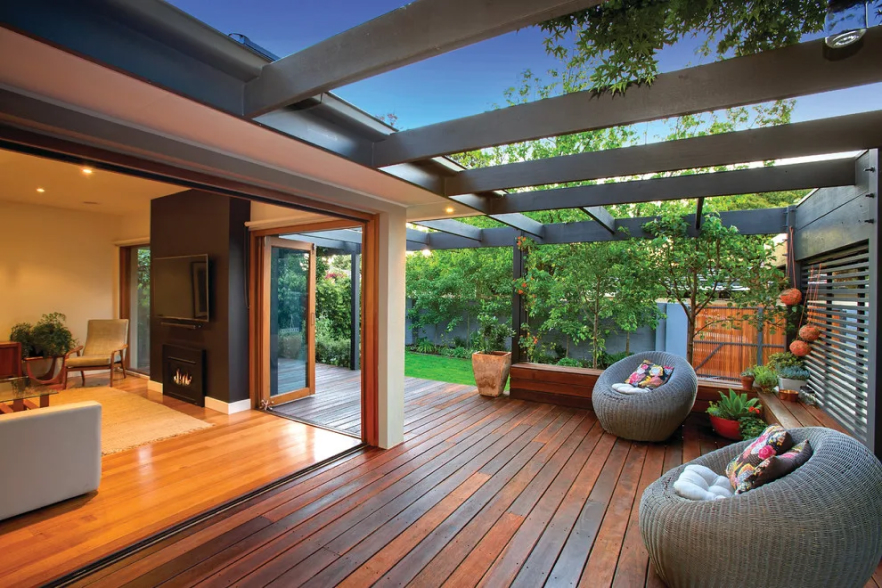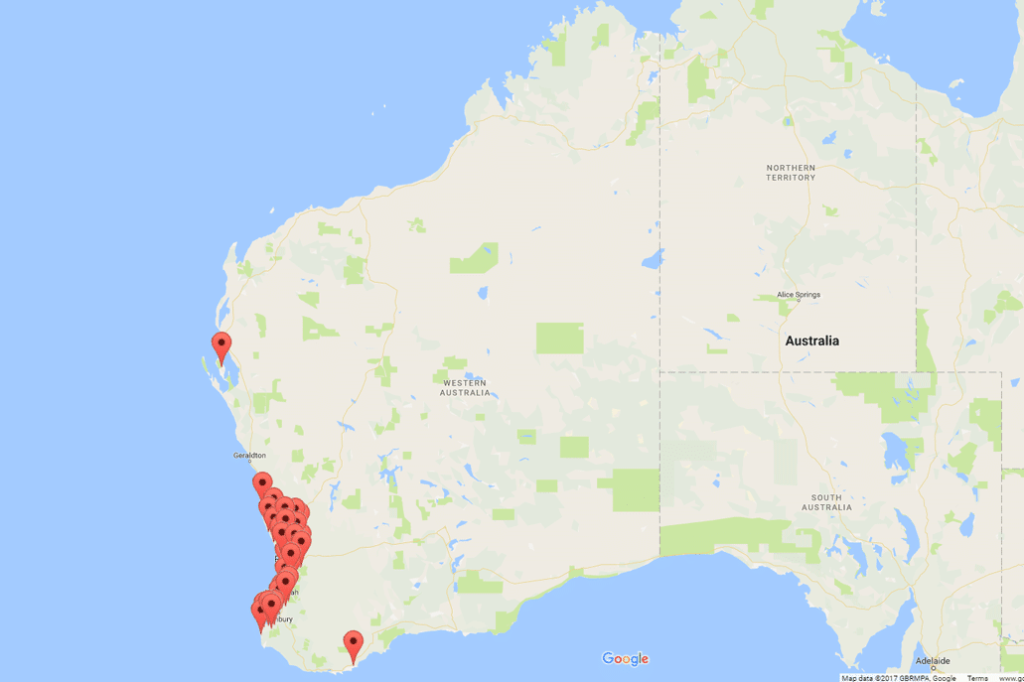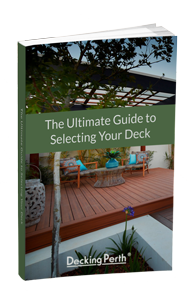What is Treated Pine?
Pine’s fast growth and sourcing from plantation-grown forests in Australia makes treated pine decking one of the most popular, cheap, and sustainable decking materials available.
As one of the most commonly used and versatile timbers in the world, treated pine is an old favourite and is often used around pools, for fencing, in gardens, to create the sub frames for decks, and as decking material itself.
Treated Pine Appearance
Untreated pine is golden white in colour but will vary according to the treatment applied. Because pine is a softer wood, it is loosely grained and prone to knotholes.
Its unique ‘blonde’ appearance can be painted to match any colour scheme or stained to highlight the natural timber.
Treatments

There are several pine treatments available; the ‘H’ denotes the level of treatment and what the treated timber can be used for.
These treatments from H3 have been used to provide protection, extend the life of the timber, and make it suitable for structural exterior use.
| Hazard Level | Exposure | Specific Service Conditions | Biological Hazard | Typical Uses |
| H1 | Inside, above ground | Completely protected from the weather and well ventilated and protected from termites | Lyctid Borer | Framing, flooring, furniture, interior joinery |
| H2 | Inside, above ground | Protected from wetting, Nil leaching | Borers and Termites | Framing, flooring, etc., used in dry situations sometimes known as blue pine |
| H2F | Inside, above ground | Protected from wetting, Nil leaching | Borers and Termites | Framing (envelope treatment) used in dry situations south of the Tropic of Capricorn only |
| H2S | Inside, above ground | Protected from wetting, Nil leaching | Borers and Termites | LVL/Plywood (glue-line treatment) used in dry situations south of the Tropic of Capricorn only |
| H3 | Inside, above ground | Subject to periodic moderate wetting and leaching | Moderate decay, borers and termites | Weatherboard, fascia, pergola posts (above ground), window joinery, framing and decking. Min. clearance above ground of 50mm |
| H3A | Inside, above ground | Products predominantly in vertical exposed situations and intended to have the supplementary paint coat system that is regularly maintained | Moderate decay, borers and termites | Fascia, bargeboards, exterior cladding, window joinery, door joinery and non-laminated verandah posts |
| H4 | Outside, in-ground contact | Subject to severe wetting and leaching | Severe decay, borers and termites | Fence posts, greenhouses, pergola posts (in-ground) and landscaping timbers |
| H5 | Outside, in-ground contact, contact with or in fresh water | Subject to extreme wetting and leaching and/or where the critical use requires more protection | Very severe decay, borers and termites | Retaining walls, piling, house stumps, building poles, cooling tower fill |
| H6 | Marine waters | Subject to prolonged immersion in sea water | Marine wood borers and decay | Boat hulls, marine piles, jetty cross bracing |
Pine Installation

Before installation of your treated pine decking at home, it is crucial that your sub frame is correctly designed and installed to accommodate your deck. Your treated pine products can be fixed with twist nails or, ring shank nails but the best way is to use is screws.
Treated pine decking will take up or lose moisture depending on dryness or moisture from the environment, causing the timber to expand or contract. Ensure gaps are provided between the decking boards which will allow for the expected expansion. Generally 3-6mm.
For handling and construction with treated pine, decking builders should observe specific Material Data Safety Sheets (MSDS) depending on the preservative used.
If this is too much and you’d rather a professional complete the work to the highest standard contact us to get three quotes from our certified installers.
Pine Decking Maintenance
Treated pine decking must be used in conditions appropriate to its hazard rating. As a natural product, timber will age and react to environmental conditions. Weathering effects in timber that would usually occur naturally over time include:
- Cracking
- Splitting
- Checking
- Twisting
- Cupping
- Bowing
- Mould
It is crucial to protect your treated pine decking with paint, oil or another sealant and maintain this protection. Using dark coloured paints or stains may worsen issues such as cracking and checking as it will cause an increased intake of heat.
Your treated pine decking must be sealed before or immediately after the timber is installed. It is advisable to use a quality primer and paint in light colours.
Both oil-based and water-based exterior wood stains are available which may contain water repellents, fungicides, and algaecides for longer life. The service life of treated pine decking is dependent on the level of maintenance and the expectations of the owner.
Want to learn more about timber decking? Check out our 4-Minute Guide to Buying Timber Decking.


































